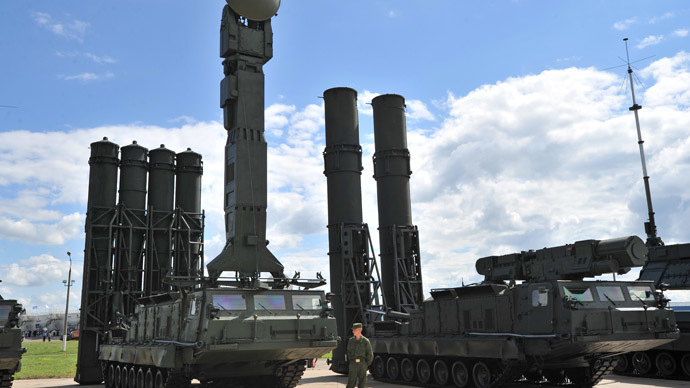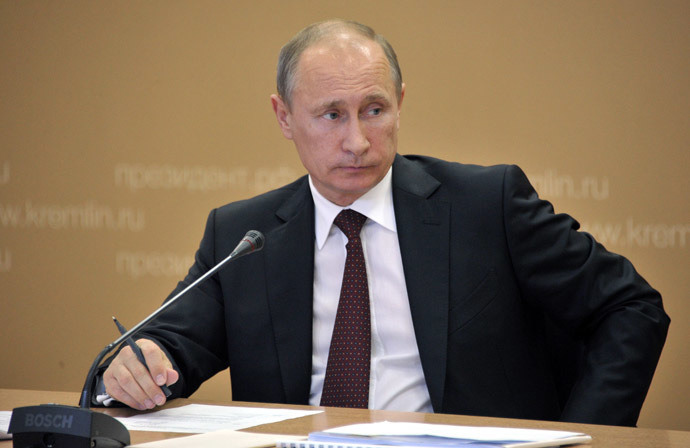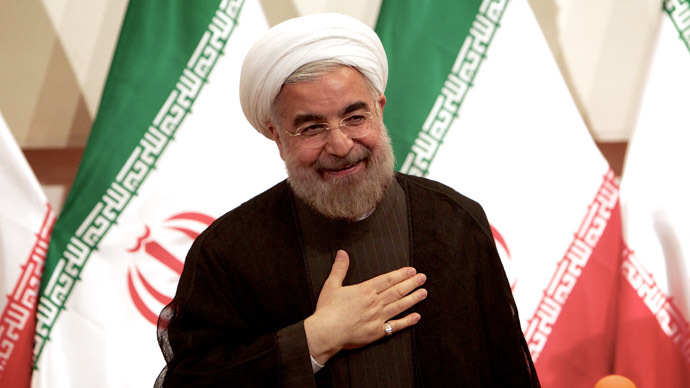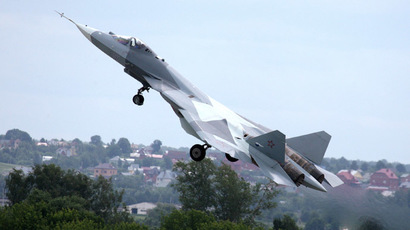Putin to offer advanced antimissiles to soothe Iran’s S-300 grudge – report

Russian President Vladimir Putin may visit Tehran next month, according to a newspaper report. Among other things he is to discuss with Iran’s new president is a possible deal to supply advanced antiballistic missiles to the Islamic Republic.
Putin is expected to fly to Iran on August 12 to meet in person the country’s newly-elected President Hassan Rouhani, reports the Russian business daily Kommersant citing anonymous sources. Iran's Mehr news agency said Putin would arrive on August 16, without citing a source.
The trip would probably be the first visit of a foreign head of state to the country after Rouhani is sworn in on August 4 and replaces Mahmoud Ahmadinejad as the head of Iranian government.
The two leaders are likely to discuss a number of pressing political and economic issues from Iran’s controversial nuclear program to Russia’s participation in the expansion of Iran’s Bushehr nuclear power plant, the report says. Among them is a possible arms deal, which is certain to draw objections from some countries.

Russia is offering Iran to purchase S-300VM Antey-2500 air defense systems, according to defense industry sources. It’s a cousin of the S-300 long-range surface-to-air missile family. S-300s were developed for the Soviet air defense forces, but the ground forces, an organizationally distinct branch of the army, wanted a similar system tailored for their own needs. On their order the S-300V was developed and later upgraded to the better S-300VM version.
Kommersant first reported that S-300VMs may be offered to Iran last month, citing anonymous sources. The move is meant to convince Tehran to revoke its complaint against Russia over the canceled deal to deliver five batteries of S-300 antimissiles, which was signed in 2007 but scrapped in 2010 when then-Russian President Dmitry Medvedev signed a law limiting Russia’s military cooperation with Iran.
The scrapped deal was worth an estimated $800 million. After it was canceled, Tehran sought damages and filed a lawsuit with an international arbitrage in Geneva, demanding $4 billion in compensation.
Russia is not planning to revoke the 2010 decree which put an end to the deal and came following a UN Security Council resolution issuing sanctions against Iran over its nuclear program. But the S-300VM systems are not listed among the weapons banned from sales to Iran and a not subject to the decree.
Over the years Moscow explored several approaches to mend the rift with Tehran that the broken deal caused. Among those was an offer to supply Tor-M1E air defense systems, which Iran rejected, according to Iranian and Russian sources.

Military experts believe that the Antey-2500 deal would be more attractive to Tehran. The system was tailored to intercept tactical ballistic missiles. A possible Israeli attack on Iran is expected to start with a massive missile attack on Iran’s key air defense sites and military air bases before follow-up airstrikes at its fortified nuclear enrichment facilities. S-300VMs are well-suited to counter this threat, Kommersant said.
Earlier, top Iranian officials, including outgoing President Ahmadinejad, confirmed that negotiations to settle the conflict over the scrapped S-300 deal out of court are underway.
An S-300VM battery is capable of taking down both aerial targets moving as fast as 4,500kph, tracking and engaging up to 24 aircraft or up to 16 ballistic missiles simultaneously. It has a range of up to 200km for aircraft and up to 40km for ballistic missiles. It takes no more than 6 minutes for a trained crew to deploy the system from travel position to combat position.
The system is cleared for international export. Russia sold two S-300VM batteries to Venezuela in April this year, which was the first deal fort the hardware. Turkey and India are among possible buyers of the system.
Putin’s spokesperson Dmitry Peskov would not immediately comment on the report of the planned Putin visit to Iran.
“There are a large number of visits currently under preparation, but this one I cannot confirm,” he told Interfax.














